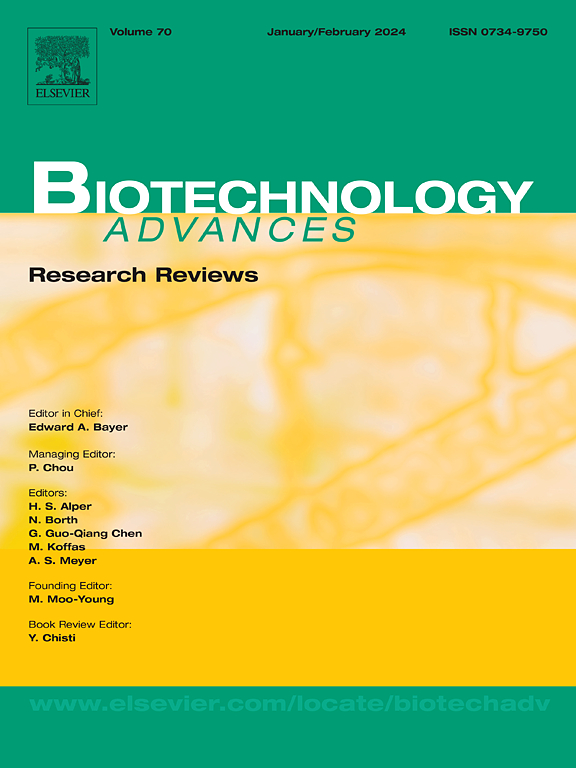Bio-upcycling PET waste: Advances in enzymatic hydrolysis and biosynthesis of value-added products
IF 12.5
1区 工程技术
Q1 BIOTECHNOLOGY & APPLIED MICROBIOLOGY
引用次数: 0
Abstract
With excellent mechanical properties and chemical stability, poly (ethylene terephthalate) (PET), an engineering plastic, is widely applied in textiles and packaging. However, the widespread use and low biodegradability of PET have resulted in significant environmental pollution. Recent advances in PET hydrolase discovery and engineering have driven the rapid advancement of PET bio-recycling, while efficient PET hydrolases can depolymerize PET into monomers under mild conditions, providing a sustainable approach to potentially addressing the plastic pollution issue. However, PET enzymatic hydrolysis still faces some technical challenges, such as poor stability of the hydrolases and low efficiency in degrading high-crystalline PET. Thus, this review summarizes recent advances in strategies to enhance the efficiency of PET enzymatic hydrolysis and explores the interplay of factors affecting PET hydrolysis efficiency. Furthermore, we highlight the progress in metabolic engineering approaches for the biotransformation of PET degradation products into higher value chemicals, providing insights into achieving efficient PET bio-recycling. This review systematically integrates key factors for enhancing the PET enzymatic hydrolysis efficiency and showcases successful examples of PET waste further valorization, providing valuable references and insights for the industrialization of PET bio-upcycling.
PET废弃物的生物升级利用:酶解和生物合成增值产品的研究进展。
聚对苯二甲酸乙酯(PET)是一种工程塑料,具有优异的机械性能和化学稳定性,广泛应用于纺织和包装领域。然而,PET的广泛使用和低生物降解性造成了严重的环境污染。PET水解酶的发现和工程的最新进展推动了PET生物循环的快速发展,而高效的PET水解酶可以在温和的条件下将PET解聚成单体,为解决塑料污染问题提供了一种可持续的方法。然而,PET酶解仍然面临着一些技术挑战,如水解酶的稳定性差,降解高结晶PET的效率低。因此,本文综述了提高PET酶解效率的策略的最新进展,并探讨了影响PET酶解效率的因素的相互作用。此外,我们强调了PET降解产物转化为高价值化学品的代谢工程方法的进展,为实现高效的PET生物循环提供了见解。本文系统地整合了提高PET酶解效率的关键因素,并展示了PET废弃物进一步增值的成功案例,为PET生物升级利用的产业化提供了有价值的参考和见解。
本文章由计算机程序翻译,如有差异,请以英文原文为准。
求助全文
约1分钟内获得全文
求助全文
来源期刊

Biotechnology advances
工程技术-生物工程与应用微生物
CiteScore
25.50
自引率
2.50%
发文量
167
审稿时长
37 days
期刊介绍:
Biotechnology Advances is a comprehensive review journal that covers all aspects of the multidisciplinary field of biotechnology. The journal focuses on biotechnology principles and their applications in various industries, agriculture, medicine, environmental concerns, and regulatory issues. It publishes authoritative articles that highlight current developments and future trends in the field of biotechnology. The journal invites submissions of manuscripts that are relevant and appropriate. It targets a wide audience, including scientists, engineers, students, instructors, researchers, practitioners, managers, governments, and other stakeholders in the field. Additionally, special issues are published based on selected presentations from recent relevant conferences in collaboration with the organizations hosting those conferences.
 求助内容:
求助内容: 应助结果提醒方式:
应助结果提醒方式:


